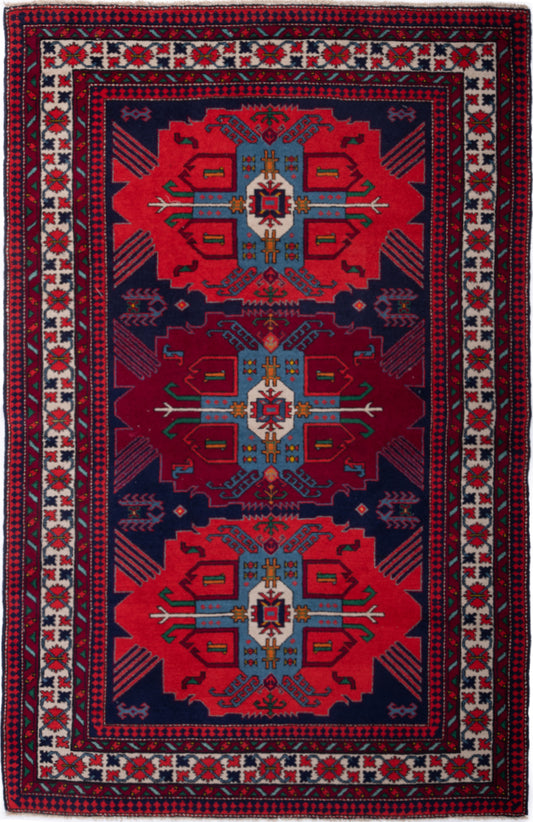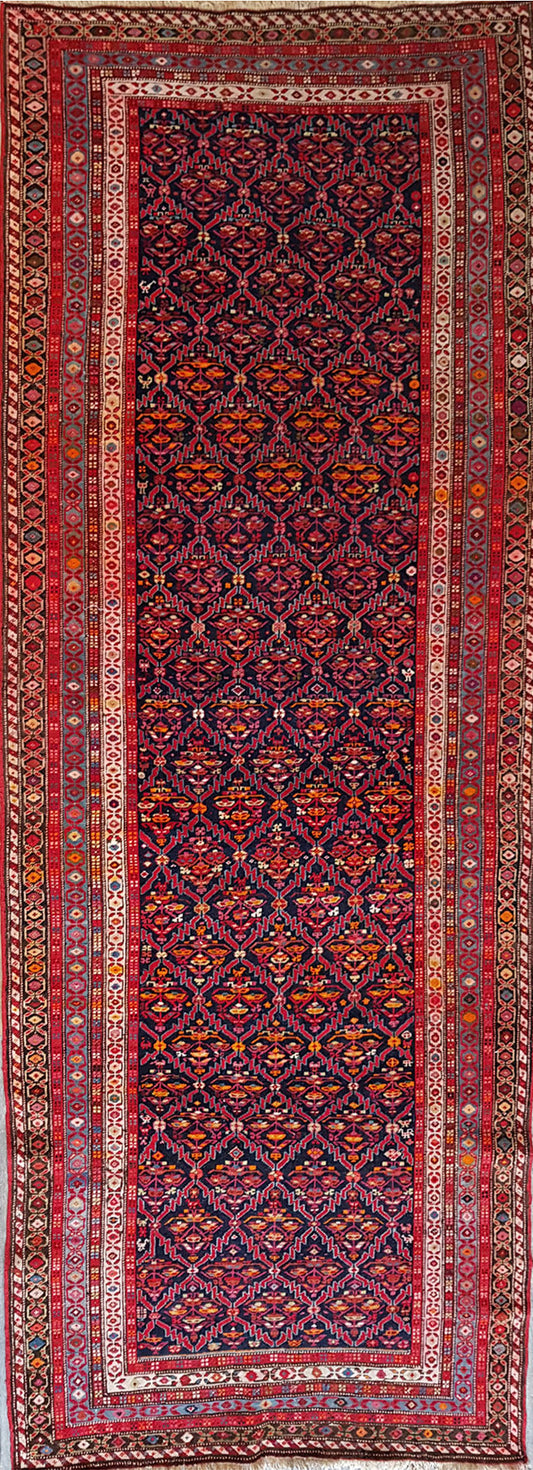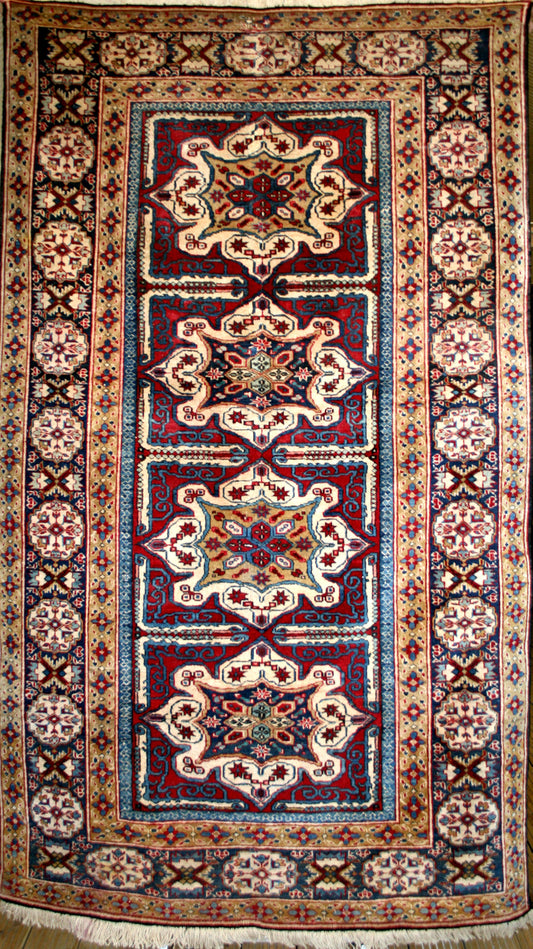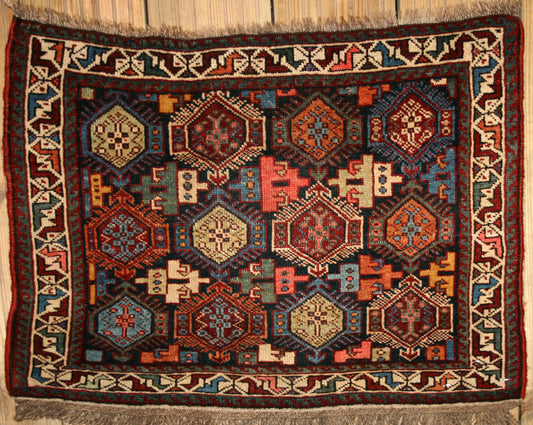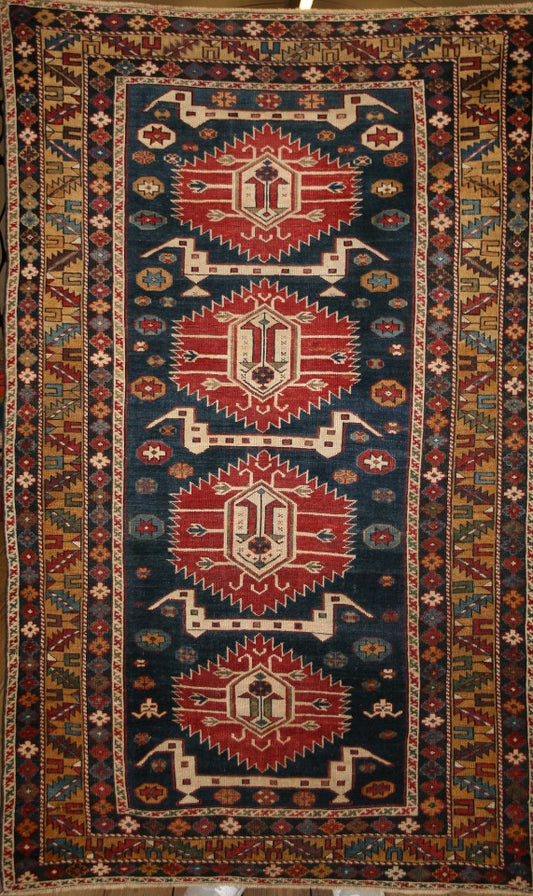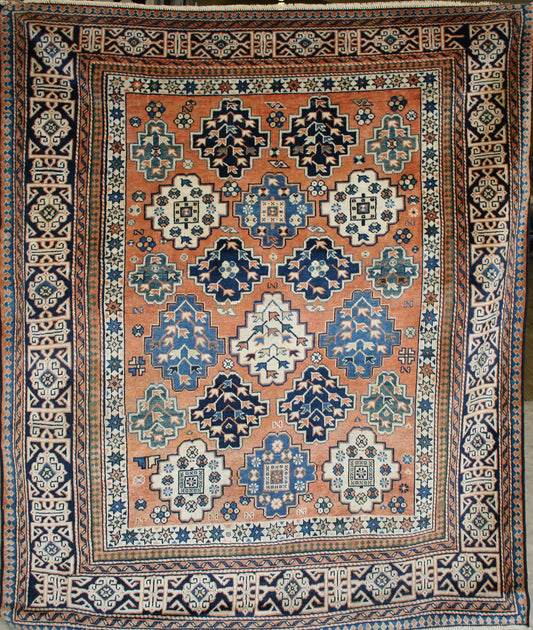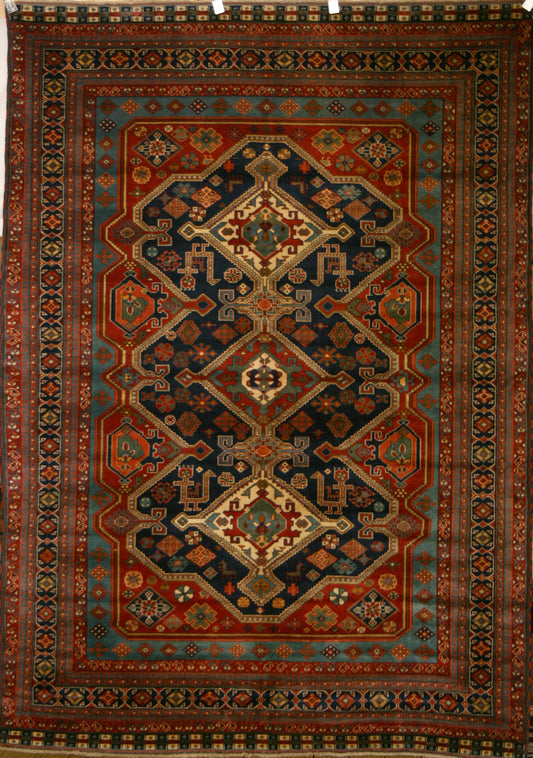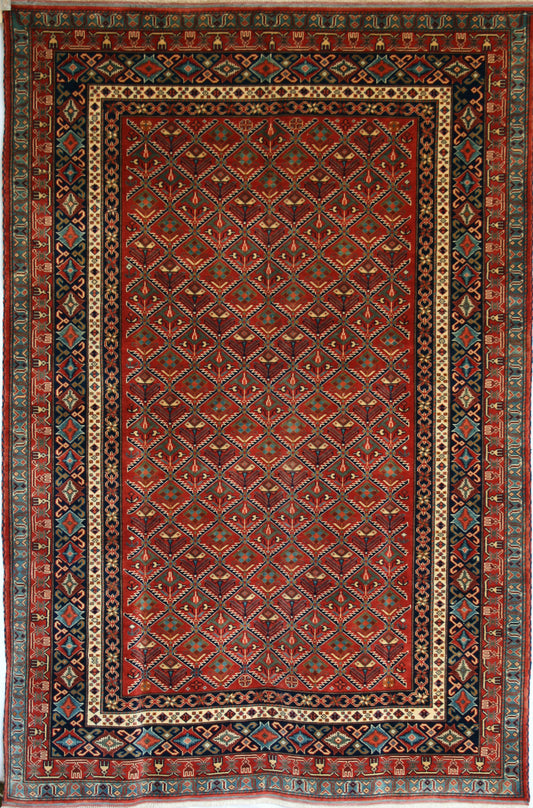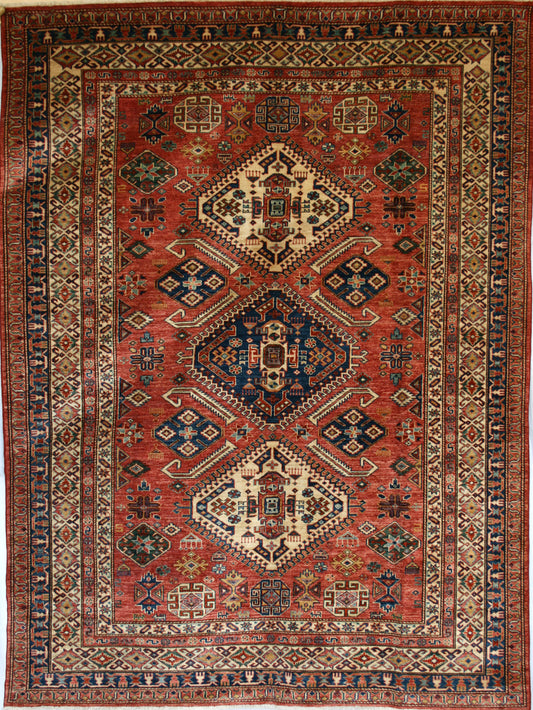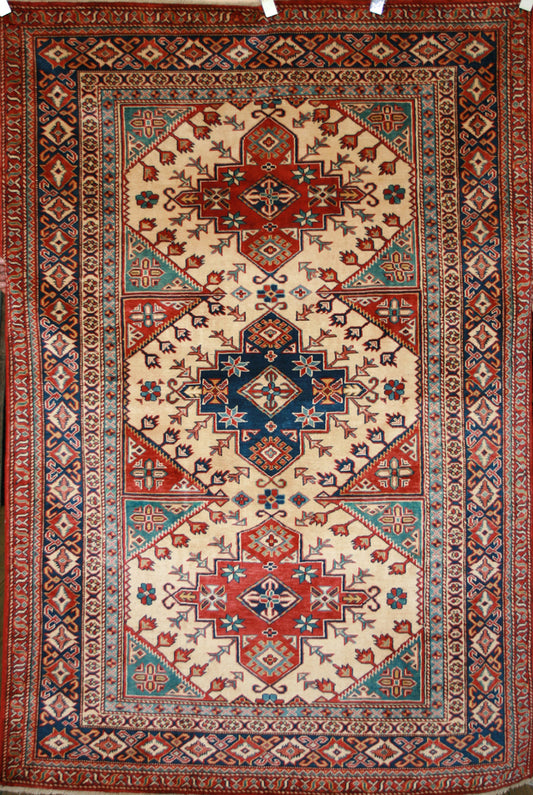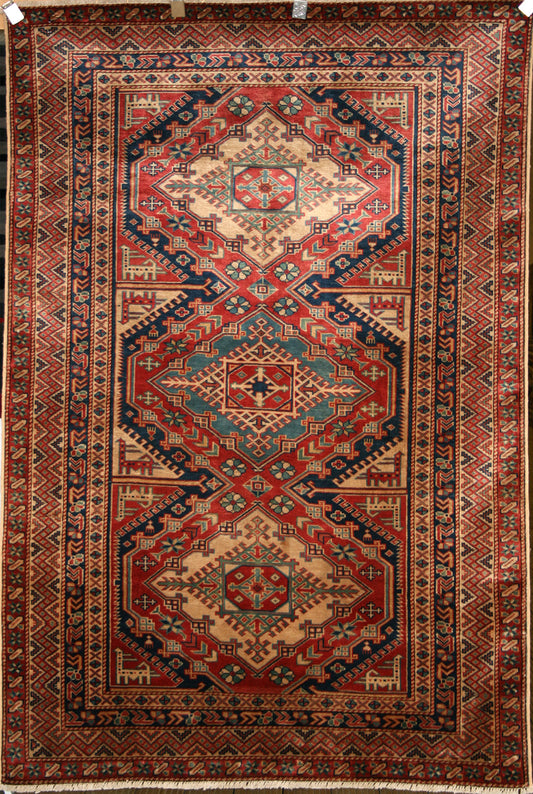Shirvan Rug History & Origin Guide
Shirvan Rugs: A Comprehensive Guide
A Brief History of Shirvan Rugs
Shirvan rugs have a rich history dating back centuries, originating from the Shirvan region, now part of modern-day Azerbaijan. The word Shirvan, or Shervan, is Persian (Farsi) for cypress tree. Known for their fine craftsmanship and intricate designs, these rugs are a testament to the skilled weavers and the area's diverse cultural heritage. Over time, the rug-making traditions of the Shirvan region have evolved and adapted, resulting in a stunning array of designs and patterns that continue to captivate collectors and enthusiasts alike.
Explore our collection of Shirvan rugs today.
The Shirvan Region and Its People
The historical region of Shirvan, also spelled Şirvan or Shervan, was situated along the western coast of the Caspian Sea, extending from the southern parts of the Caucasus Mountains to the Kura River. The area has been home to various ethnic groups throughout history, such as the Turkic, Caucasian, and Persian peoples, contributing to the rich cultural tapestry of the region.
Typical Patterns, Motifs, and Designs of Shirvan Rugs
Shirvan rugs are known for their intricate geometric patterns, often featuring a mix of tribal motifs and stylised floral designs. Common elements include the latch hook, the S-shaped dragon motif, and the tree of life. The designs often incorporate a central medallion, surrounded by a variety of smaller motifs and border patterns. Some Shirvan rugs showcase more pictorial elements, such as animals, people, or scenes from daily life, reflecting the weavers' creativity and the region's rich storytelling traditions.
Materials, Knotting, and Craftsmanship
Shirvan rugs are typically hand-knotted using high-quality wool sourced from local sheep breeds. The wool is often hand-spun and dyed using natural dyes derived from plants and insects, resulting in a vibrant and diverse colour palette. The foundation of these rugs is usually made of wool, with some older examples featuring a cotton or silk warp.
Shirvan rugs are known for their relatively high knot density, often ranging from 100 to 300 knots per square inch. The weavers predominantly use the symmetrical Turkish (Ghiordes) knot, although some examples also feature the asymmetrical Persian (Senneh) knot.
Shirvan Rug Designs in Afghanistan
In recent years, the production of Shirvan rug designs has expanded beyond the Caucasus region and into Afghanistan. Afghan weavers, known for their own rich rug-making history, have embraced the traditional motifs and patterns of Shirvan rugs, incorporating them into their own creations. This fusion of design elements from both the Caucasus and Afghanistan has led to a new wave of stunning, high-quality rugs that carry the essence of Shirvan's heritage.
The weavers in Afghanistan use local materials, such as hand-spun wool and natural dyes, to recreate the intricate designs and vibrant colours characteristic of Shirvan rugs. This ensures that the rugs retain their authenticity while adapting to the new cultural context. The Afghan weavers also employ their own knotting techniques, which can slightly differ from those used in the original Shirvan rugs, resulting in unique and fascinating pieces that showcase the craftsmanship of both regions.
As the global appreciation for handmade rugs continues to grow, the production of Shirvan rug designs in Afghanistan offers a fresh perspective on the rich history and cultural significance of these captivating textiles. With the blend of traditional and contemporary influences, Afghan-made Shirvan rugs are a testament to the enduring appeal and timeless artistry of the rug-making craft.
Famous Weavers and Rugs from Shirvan
While specific weavers may not be widely known, the masterful craftsmanship and artistry exhibited in Shirvan rugs have garnered widespread admiration. Some older and rare examples of Shirvan rugs have achieved significant value at auctions, reflecting their artistic merit and historical significance.
Nearby Rug-Producing Areas
Several towns and cities in the Caucasus region, in proximity to Shirvan, are also renowned for their rug-making traditions. These include Kuba, Daghestan, and Gendje, each with their distinctive rug designs and styles, showcasing the rich rug-making heritage of the Caucasus region.
Climate and Best Times to Visit
The Shirvan region experiences a semi-arid climate, with hot summers and mild winters. The best time to visit the area is during the spring and autumn months, when the temperatures are moderate, and the landscape is lush and colourful.
Places to Visit and Cultural Attractions
While the region is no longer a hub for rug production, visitors can still explore the rich cultural heritage of the area, such as historical sites, local museums, and traditional markets. Some notable attractions include the Shirvanshahs' Palace in Baku, the ancient city of Shabran, and the Gobustan National Park, which is home to prehistoric rock art and fascinating geological formations. Additionally, those interested in rug-making can visit local workshops and galleries to learn more about the traditional techniques and artistry of the region.
Conclusion
Shirvan rugs are an exquisite example of the rich cultural heritage and skilled craftsmanship of the Caucasus region. Their intricate designs, vibrant colours, and fine knotting make them highly sought-after among collectors and enthusiasts. By understanding the history, motifs, and techniques behind these stunning rugs, one can appreciate their true artistic value and the remarkable legacy of the weavers who created them.
Browse Our Current Selection of Shirvan Rugs
-
Semi-Antique Shirvan Rug
Regular price £1,475.00Regular priceUnit price per -
Antique Caucasian Shirvan Runner Rug
Regular price £7,975.00Regular priceUnit price per -
Caucasian Shirvan Runner Rug
Regular price £2,395.00Regular priceUnit price per -
Semi-Antique Caucasian Shirvan Rug
Regular price £4,995.00Regular priceUnit price per -
Antique Caucasian Shirvan Rug
Regular price £595.00Regular priceUnit price per -
Antique Caucasian Shirvan Rug
Regular price £5,245.00Regular priceUnit price per -
Antique Caucasian Shirvan Rug
Regular price £2,995.00Regular priceUnit price per -
Afghan Shirvan Rug
Regular price £3,675.00Regular priceUnit price per -
Afghan Shirvan Rug
Regular price £3,345.00Regular priceUnit price per -
Afghan Shirvan Rug
Regular price £4,145.00Regular priceUnit price per -
Afghan Shirvan Rug
Regular price £2,495.00Regular priceUnit price per -
Afghan Shirvan Rug
Regular price £1,795.00Regular priceUnit price per

